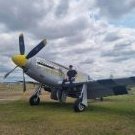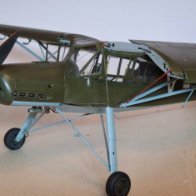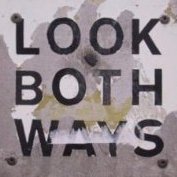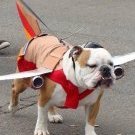-
Posts
485 -
Joined
-
Last visited
-
Days Won
4
IainM last won the day on May 25
IainM had the most liked content!
Profile Information
-
Gender
Male
-
Location
Rangiora, New Zealand
-
Interests
1/32 WWII Nightfighters!!!
Recent Profile Visitors
4,588 profile views
-
 Anthony in NZ reacted to a post in a topic:
1/32 Hasegawa Ju87D-8(N) Night Stuka 1./NSGr.9 Florence, Italy 1944
Anthony in NZ reacted to a post in a topic:
1/32 Hasegawa Ju87D-8(N) Night Stuka 1./NSGr.9 Florence, Italy 1944
-
 IainM reacted to a post in a topic:
1/32 Hasegawa Ju87D-8(N) Night Stuka 1./NSGr.9 Florence, Italy 1944
IainM reacted to a post in a topic:
1/32 Hasegawa Ju87D-8(N) Night Stuka 1./NSGr.9 Florence, Italy 1944
-
 alain11 reacted to a post in a topic:
1/32 Hasegawa Ju87D-8(N) Night Stuka 1./NSGr.9 Florence, Italy 1944
alain11 reacted to a post in a topic:
1/32 Hasegawa Ju87D-8(N) Night Stuka 1./NSGr.9 Florence, Italy 1944
-
 IainM reacted to a post in a topic:
1/32 Hasegawa Grumman Hellcat F6F-3
IainM reacted to a post in a topic:
1/32 Hasegawa Grumman Hellcat F6F-3
-
IainM started following Trumpegawa (or Hasepeter?) F6F-? Hellcat kitbash (attempt)
-
 IainM reacted to a post in a topic:
Stuka canopy internal frames?
IainM reacted to a post in a topic:
Stuka canopy internal frames?
-
 IainM reacted to a post in a topic:
1/32 Hasegawa Grumman Hellcat F6F-3
IainM reacted to a post in a topic:
1/32 Hasegawa Grumman Hellcat F6F-3
-
 IainM reacted to a post in a topic:
1/32 Hasegawa Grumman Hellcat F6F-3
IainM reacted to a post in a topic:
1/32 Hasegawa Grumman Hellcat F6F-3
-
 IainM reacted to a post in a topic:
1/18 Scale P-51B 3D Print Build
IainM reacted to a post in a topic:
1/18 Scale P-51B 3D Print Build
-
 IainM reacted to a post in a topic:
1/32 Infinity Models SB2C-4 Helldiver
IainM reacted to a post in a topic:
1/32 Infinity Models SB2C-4 Helldiver
-
 IainM reacted to a post in a topic:
Revell 1/32 Me262B-1/U-1 Red 12, 10 or 8.....
IainM reacted to a post in a topic:
Revell 1/32 Me262B-1/U-1 Red 12, 10 or 8.....
-
 Pastor John reacted to a post in a topic:
Revell 1/32 Me262B-1/U-1 Red 12, 10 or 8.....
Pastor John reacted to a post in a topic:
Revell 1/32 Me262B-1/U-1 Red 12, 10 or 8.....
-
 Pastor John reacted to a post in a topic:
Revell 1/32 Me262B-1/U-1 Red 12, 10 or 8.....
Pastor John reacted to a post in a topic:
Revell 1/32 Me262B-1/U-1 Red 12, 10 or 8.....
-
 Mal_Belford reacted to a post in a topic:
Revell 1/32 Me262B-1/U-1 Red 12, 10 or 8.....
Mal_Belford reacted to a post in a topic:
Revell 1/32 Me262B-1/U-1 Red 12, 10 or 8.....
-
 Uncarina reacted to a post in a topic:
Revell 1/32 Me262B-1/U-1 Red 12, 10 or 8.....
Uncarina reacted to a post in a topic:
Revell 1/32 Me262B-1/U-1 Red 12, 10 or 8.....
-
 Uncarina reacted to a post in a topic:
Revell 1/32 Me262B-1/U-1 Red 12, 10 or 8.....
Uncarina reacted to a post in a topic:
Revell 1/32 Me262B-1/U-1 Red 12, 10 or 8.....
-
 Fanes reacted to a post in a topic:
Revell 1/32 Me262B-1/U-1 Red 12, 10 or 8.....
Fanes reacted to a post in a topic:
Revell 1/32 Me262B-1/U-1 Red 12, 10 or 8.....
-
 patricksparks reacted to a post in a topic:
Revell 1/32 Me262B-1/U-1 Red 12, 10 or 8.....
patricksparks reacted to a post in a topic:
Revell 1/32 Me262B-1/U-1 Red 12, 10 or 8.....
-
 IainM reacted to a post in a topic:
Revell 1/32 Me262B-1/U-1 Red 12, 10 or 8.....
IainM reacted to a post in a topic:
Revell 1/32 Me262B-1/U-1 Red 12, 10 or 8.....
-
 Palm-tree reacted to a post in a topic:
Revell 1/32 Me262B-1/U-1 Red 12, 10 or 8.....
Palm-tree reacted to a post in a topic:
Revell 1/32 Me262B-1/U-1 Red 12, 10 or 8.....
-
Thanks Matt, I'll most likely just have a few degrees of turn it in
-
Working on the undercarriage..Barracuda wheels have been fitted to the Revell legs. Some enlarging of the axle holes in the wheels was required as per Roy's instructions, will look lovely once painted and weathered. Barracuda stuff is always really good - I'm not sure what resin they use, but it's some of the best stuff I've ever worked with as a modeller!! Aside from the MLG legs, which will be OK once cleaned up and sanded, the rest of the gear legs and actuator arms need a bit more work. The moulding "step" on all the actuator arms and front landing gear leg piston was really pronounced, so if I cleaned them up with my hobby knife, and then sanded them back to round, they would have all been woefully thin and looked really out of scale. So out came the saw, drill, brass rod and tube.... I sawed the arms (rod thingy) off, chucked that in my drill, and then pretending my drill was a lathe, used a chisel to turn down the diameter of the shaft until it could fit inside the brass tube. The other side was drilled out until the tube could fit inside it. It also allows for a bit of slide movement when attaching it between the MLG leg and the wheel bay. Did the same with the nose gear and actuator piston/arm, except the nose gear's brass piece is solid rod instead of tube. Modifying this also allows me position the nose wheel turned sightly off the centreline, as I believe the Me262 had nosewheel steering - please correct me if I'm wrong before I eventually attach it!
-
 IainM reacted to a post in a topic:
Zoukei Mura FW-190A-4 JG 54
IainM reacted to a post in a topic:
Zoukei Mura FW-190A-4 JG 54
-
General fit of the engine nacelles to the wing and wing to fuselage. I've done quite a bit of scraping, sanding, dry-fitting, but once glue is applied it'll fit really nicely. Those gaps between the wings and fuselage will disappear....
-
I've also joined the two fuselage halves, installed the nose gear bay and closed up the nose section, there wont be any of the gun bay visible. Cockpit coaming has been added, as there is no need to leave it off till later. Everything you need to do can be accessed from below. I worked on dry-fitting and gluing everything from the nose portion backwards, in order to get the best fit I could. Although the instructions have a closed or open gun bay option, I think this kit was more deigned around the open option. I've had to add a bit of shim to the forward portion of the gun bay cover to make it fit a bit better. There is still a bit of filling to do though along the back portion I forgot that this model will be a tail-sitter and forgot to add weights!!!! Doh!! However, there is still a way out, and that will be to glue some weights behind the gun bay/nose gear bulkhead (more than enough space), and I'll add some weight to the drop tanks before gluing them together...
-
So it begins...This is the cockpit tub bottom glues to the firewall, with the cockpit sides taped in place. Quite a bit of fettling and filling to be done here, especially as the underside of the cockpit area is quite visible through the wheel well. Yes, I know you'd have to turn the model upside down to see it but the gaps will still be visible through the canopy glazing.. The engines have been assembled, but in this case just more of a jig to hold the inlet fan and exhaust nozzle. There were just too many moulding issues to justify all the work to have it uncovered, and plus I prefer the lines when the engine nacelles are closed. The wheel wells have been assembled, I did this after gluing the lower sections of wing together. There are tabs on the lower wings that you need to fit into place, but the mounting holes need to be made a bit bigger for it all to fit, otherwise those tabs and pins will never line up properly. Revell would have you build the nacelles around the engine in the instructions, but I've deviated from this quite significantly. After assembling the engines, I didn't glue the exhaust nozzles to the engines, but left them as a friction-fit. I then glued the nozzles to the nacelle halves with the engine in place, only applying glue to the underside of the nacelle where the exhaust nozzle is. The rest of the joint forward of those is still unglued. I then glued the rear fairing to the nacelle getting the best join I could. The engines can now be slid out from the front either before or after gluing the forward fairing - there is enough space for it to come out. I then taped the upper and lower wing halves together, popped the nacelles on and then glued the forward fairing in place This still needs clean-up and all the sundry, but I think it's a way easier method of getting a decent fit onto the wing. As said, the added bonus is that you can still pop a detailed engine in the if you choose to do so. I'll finish gluing up the rest of the lower nacelle once I get everything in and need to attach the forward intake fairing. I think after a bit of dry-fitting both upper covers (the ones forward of the wing fairing) will need a bit of shim to get them to fit properly, but that can wait for now.
-
Ah, thanks for that! I'd forgotten about the KLP build guide!!!! Just ordered it!! I've got no other info here at home on the 262 save the web!
-
Yep, although the AIMS set is designed more for the Trumpeter kit, and is basically some engine details/underwing engine mount plate and then some leading edge/flap detail. Won't use the majority of it as the engine cowls will be closed, as I'm not happy with the engines themselves as moulded Great pity about the RB stuff, such fantastic sets
-
Greetings all I've started a new build, the Revell Me262 Night fighter boxing. Made a start a couple of weeks ago, so the posting of this build thread is a bit after the fact, however I thought I'd better get something on here before I forget completely. The obligatory picture of the box art - about the only good thing the style of side-opening boxes Revell use is good for...once the sprues came out of it, into the bin it went! Some aftermarket things I'm planning to throw at it - in the end I've decided to go with the Barracuda Studios wheels, as it includes the nose wheel and has the pressure valves. The FuG radar set is an absolute gem, I almost started drooling when I opened it up to have a look at the contents, so that will definitely be a huge improvement over the kit offering. The wing/engine detail set from @Pastor John at AIMS (although designed for the Trumpeter kit) will remain relatively untouched unfortunately, as once I opened the kit and had a look at the actual kit parts and did some dry-fitting, I've decided to leave the engine cowlings closed, so I might only end up using the etch for the areas below the leading edge slats. Will still decide once I get the wings built. Here are some other goodies that I've got to throw at it. I'll most likely go with the HGW set as it contains all the markings and stencils for the kit I need. I have NOT yet decided what specific aircraft I'll be building, could be either of the three marking options. So first impressions of the kit itself? Nasty!!!!! A lot of soft detail, huge amounts of flash, pebbly surfaces, ill-fitting parts, some short shot area in my example, moulds that didn't line up properly I think as some of the parts have such big steps in them (actuator rods, the engine sprues....) that I've needed to replace them or will when I get to that part in the build. However, that's modelling for you, and I do believe it'll build up into a decent model in the end... Iain
-
I've also got a Hasegawa F6F-5, as well as the Trumpeter kit, was planning on mating the Has fuselage and Trumpeter wings, but man, the design concept between the two kits is really different. I've looked and fiddled, but the chord and wing root differences are way different.....not being sure if the effort is worth it, I've shelf-of-doomed it for the moment...
-

1/32 Hasegawa Ju87D-8(N) Night Stuka 1./NSGr.9 Florence, Italy 1944
IainM replied to IainM's topic in Ready for Inspection
And thank you for that image of the real aircraft!!- 26 replies
-
- junkers
- ju87d-8(n)
- (and 11 more)
-

***Finished*** 1/32 Fisher Models - Hawker Sea Fury FB.11
IainM replied to Tolga ULGUR's topic in Works in Progress
Love it! Looks absolutely beautiful, well done! -
Haha, try the NZ dollar! 44 pence to 1 NZD
-

1/32 Hasegawa Ju87D-8(N) Night Stuka 1./NSGr.9 Florence, Italy 1944
IainM replied to IainM's topic in Ready for Inspection
With pleasure @LSP_Ray- 26 replies
-
- junkers
- ju87d-8(n)
- (and 11 more)
-
Thank you everyone for the kind comments. Highly appreciated
- 138 replies
-

1/32 Hasegawa Ju87D-8(N) Night Stuka 1./NSGr.9 Florence, Italy 1944
IainM replied to IainM's topic in Ready for Inspection
It was intimidating, first one I've ever done! In the end I think I was a bit too over-cautious though, if I did that again I would break out my Micron and really get in super-tight. Biggest challenge though was trying to get the paint/thinner mix correct- 26 replies
-
- junkers
- ju87d-8(n)
- (and 11 more)








